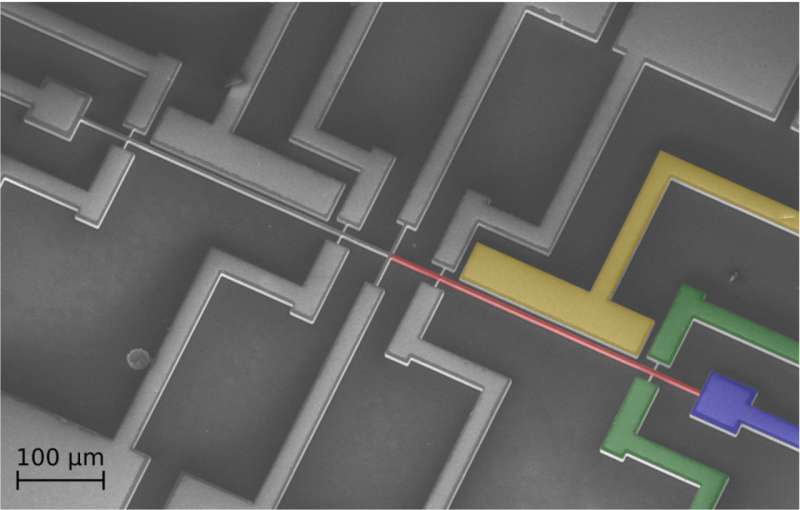New reservoir computer marks first-ever microelectromechanical neural network application

As artificial intelligence has become increasingly sophisticated, it has inspired renewed efforts to develop computers whose physical architecture mimics the human brain. One approach, called reservoir computing, allows hardware devices to achieve the higher-dimension calculations required by emerging artificial intelligence. One new device highlights the potential of extremely small mechanical systems to achieve these calculations.
A group of researchers at the Université de Sherbrooke in Québec, Canada, reports the construction of the first reservoir computing device built with a microelectromechanical system (MEMS). Published in the Journal of Applied Physics, the neural network exploits the nonlinear dynamics of a microscale silicon beam to perform its calculations. The group's work looks to create devices that can act simultaneously as a sensor and a computer using a fraction of the energy a normal computer would use.
The article appears in a special topic section of the journal devoted to "New Physics and Materials for Neuromorphic Computation," which highlights new developments in physical and materials science research that hold promise for developing the very large-scale, integrated "neuromorphic" systems of tomorrow that will carry computation beyond the limitations of current semiconductors today.
"These kinds of calculations are normally only done in software, and computers can be inefficient," said Guillaume Dion, an author on the paper. "Many of the sensors today are built with MEMS, so devices like ours would be ideal technology to blur the boundary between sensors and computers."
The device relies on the nonlinear dynamics of how the silicon beam, at widths 20 times thinner than a human hair, oscillates in space. The results from this oscillation are used to construct a virtual neural network that projects the input signal into the higher dimensional space required for neural network computing.
In demonstrations, the system was able to switch between different common benchmark tasks for neural networks with relative ease, Dion said, including classifying spoken sounds and processing binary patterns with accuracies of 78.2 percent and 99.9 percent respectively.
"This tiny beam of silicon can do very different tasks," said Julien Sylvestre, another author on the paper. "It's surprisingly easy to adjust it to make it perform well at recognizing words."
Sylvestre said he and his colleagues are looking to explore increasingly complicated computations using the silicon beam device, with the hopes of developing small and energy-efficient sensors and robot controllers.
More information: "Reservoir computing with a single delay-coupled non-linear mechanical oscillator," Journal of Applied Physics (2018). DOI: 10.1063/1.5038038
Journal information: Journal of Applied Physics
Provided by American Institute of Physics





















